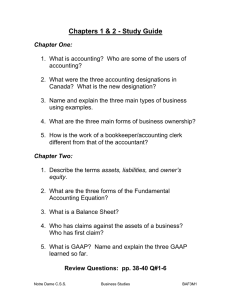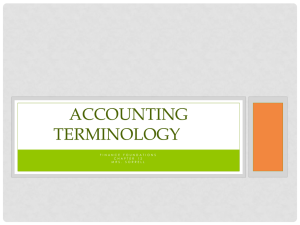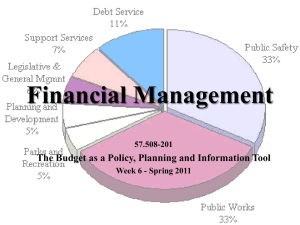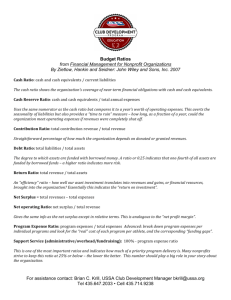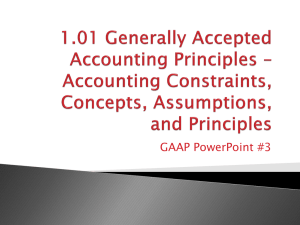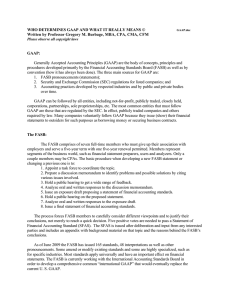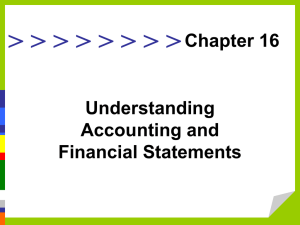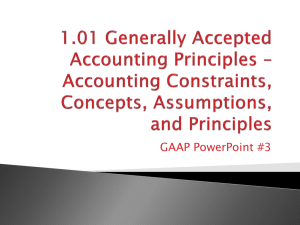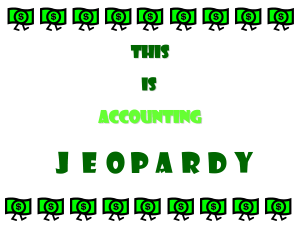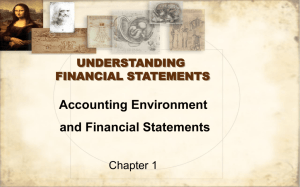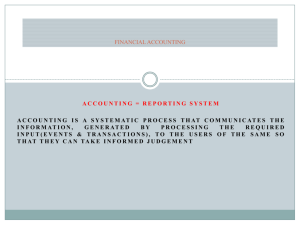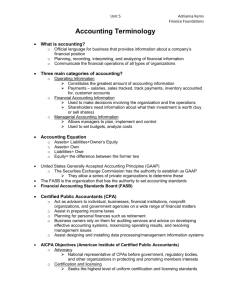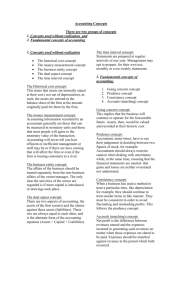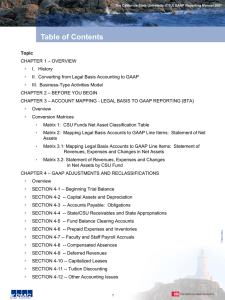Concepts of Accounting
advertisement
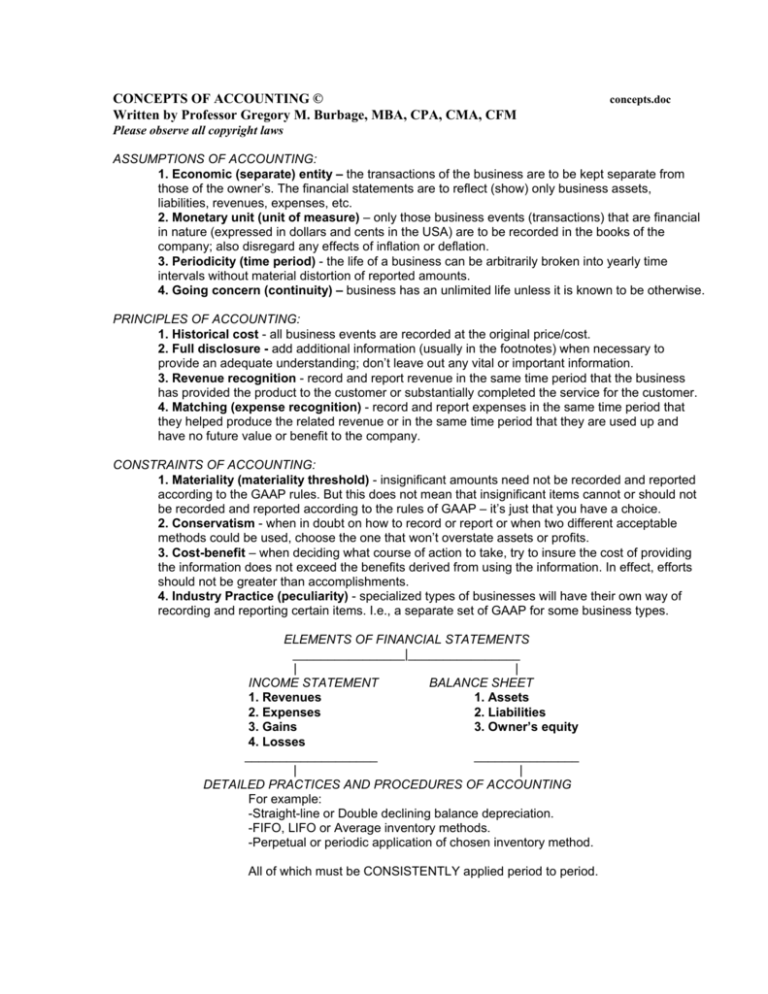
CONCEPTS OF ACCOUNTING © Written by Professor Gregory M. Burbage, MBA, CPA, CMA, CFM concepts.doc Please observe all copyright laws ASSUMPTIONS OF ACCOUNTING: 1. Economic (separate) entity – the transactions of the business are to be kept separate from those of the owner’s. The financial statements are to reflect (show) only business assets, liabilities, revenues, expenses, etc. 2. Monetary unit (unit of measure) – only those business events (transactions) that are financial in nature (expressed in dollars and cents in the USA) are to be recorded in the books of the company; also disregard any effects of inflation or deflation. 3. Periodicity (time period) - the life of a business can be arbitrarily broken into yearly time intervals without material distortion of reported amounts. 4. Going concern (continuity) – business has an unlimited life unless it is known to be otherwise. PRINCIPLES OF ACCOUNTING: 1. Historical cost - all business events are recorded at the original price/cost. 2. Full disclosure - add additional information (usually in the footnotes) when necessary to provide an adequate understanding; don’t leave out any vital or important information. 3. Revenue recognition - record and report revenue in the same time period that the business has provided the product to the customer or substantially completed the service for the customer. 4. Matching (expense recognition) - record and report expenses in the same time period that they helped produce the related revenue or in the same time period that they are used up and have no future value or benefit to the company. CONSTRAINTS OF ACCOUNTING: 1. Materiality (materiality threshold) - insignificant amounts need not be recorded and reported according to the GAAP rules. But this does not mean that insignificant items cannot or should not be recorded and reported according to the rules of GAAP – it’s just that you have a choice. 2. Conservatism - when in doubt on how to record or report or when two different acceptable methods could be used, choose the one that won’t overstate assets or profits. 3. Cost-benefit – when deciding what course of action to take, try to insure the cost of providing the information does not exceed the benefits derived from using the information. In effect, efforts should not be greater than accomplishments. 4. Industry Practice (peculiarity) - specialized types of businesses will have their own way of recording and reporting certain items. I.e., a separate set of GAAP for some business types. ELEMENTS OF FINANCIAL STATEMENTS ________________|________________ | | INCOME STATEMENT BALANCE SHEET 1. Revenues 1. Assets 2. Expenses 2. Liabilities 3. Gains 3. Owner’s equity 4. Losses ___________________ _______________ | | DETAILED PRACTICES AND PROCEDURES OF ACCOUNTING For example: -Straight-line or Double declining balance depreciation. -FIFO, LIFO or Average inventory methods. -Perpetual or periodic application of chosen inventory method. All of which must be CONSISTENTLY applied period to period.

